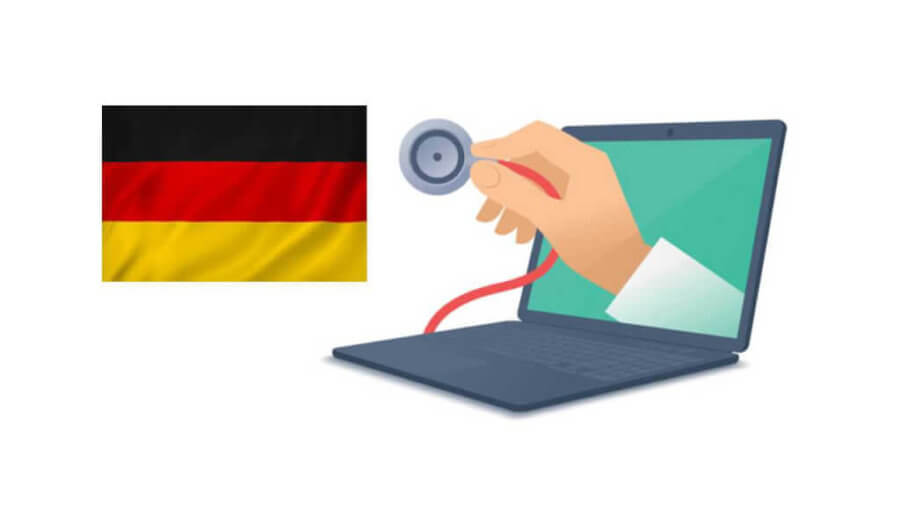Applications of digital health in Germany
Germany is no doubt a global digital healthcare leader with over three hundred billion Euros spent on that industry as at 2013. The expenditure has not stopped increasing.
Chronic illnesses, advanced technology and a high count of an ageing populace, are its recipe for a booming digital health market. 13.5% of the citizenry is covered by the private health sector while 86.5% left, are under the public health insurance. Scores of private medical practices have been set-up and are ready to take on the predicted influx of patients.
The digital market brings to the table, unique and different stipulations for the healthcare industry. The tremendous growths in the profitable software market, internet usage and so on, have all contributed to the advancement of digital healthcare in the Germany.
The digital healthcare industry is highly competitive on a global scale. This call for definite plans and actions towards the development of an organized structure digital healthcare.
Investment opportunities
At the fast rate, that the digital healthcare market is growing, interested, prudent and knowledge investors should consider financing SMEs or startups. The level of advanced technology, consistent innovation, extensive research and development in startup businesses are substantial and accurate pointers in investment.
Germany’s digital health market comprises of varying segments. Each has their growth level; with some high and low status. mHealth or mobile health is a primary key sector and is followed up by eHealth, telemedicine and so on.
Some of them are:
1. Telemedicine:
This particular market segment in Germany has attracted a lot of interest from related groups such as patients, medical doctors, and the government. Nonetheless, it has been stuck in that phase despite the valuable time that has been dedicated to studies, experiment, and development. No real progress has been made towards the actualizing this segment for several reasons. Lack of a stipulated rules regarding payment for this service is one reason. Another factor is the unavailability of an organized system for information flow or exchange.
So far, incorporating telemedicine into the digital health market has been difficult and challenging due to these factors.
Other factors to consider are; the difficult challenge of securing adequate finances needed for the market integration process by the digital startups.
It is not all bad news. Germany’s government is currently pushing towards the advancement and actualization of this segment. The new health regulations and laws on the ground have the solidified this claim, and notable changes are now apparent.
2. mHealth or Mobile Health:
This segment adopts applications and mobile devices into primary health care. Fitness and health applications belong in this segment. For example, fitness trackers, smart watches, weight loss apps and so on. mHealth market in Berlin, Germany is the biggest in Europe. It has amounted a revenue of over three hundred and twenty billion Euros, annually with a record of an eleven point two (11.2) G.D.P
Fast network set-up, fitness and health consciousness and willingness to invest in personal wellness has resulted in a boom in the digitization of healthcare.
It necessitated the creation of mobile health solutions. The use of medical mobile devices covers a major part of the youth and middle-aged German populace, as well as the ageing citizens. Over three hundred thousand mobile health applications were placed in the German market and by 2015, 3 billion downloads were recorded and six billion in 2017. Such a popular acceptance has placed it at the top of mHealth global market.
| Recommended for you | |
| Introduction to German digital healthcare market | |
| Top 5 challenges for German MedTech SMEs | |
| 30 Organisations to help you in India-Germany |
3. Consultation and Appointment Management:
Several factors such as distance and weather can be a barrier to proper medical consultation. For example, time spent on waiting for the doctor, weather, and distance. For example, an elderly woman seeking medical attention might find it difficult to move from a remote part of the country to the main part where her doctor and the hospital is located. In this situation, digital health in the form of video or online consultation comes in handy.
For so time, this segment has experienced slow-paced growth due to the German digital health market or industry. This is because of previous regulations, which did not allow video consultation especially if there are no initial one on one consultation.
However, with the new regulations on board, this segment has come to life. The new eHealth consultation laws enable video consultations between doctor and patients if major health insurant agrees to assume the cost of operation.
Undeniably, this is a major step in Germany’s eHealth industry or market and a huge benefit to everyone else involved -patients, doctors.
As of now, this segment’s advancement is a bit slow because of the late adoption. TeleClinic founder, Katharina Juyer used the word ‘lagging’ to describe its current state. Fortunately, it is not bound to remain the same. Predictions are that this segment will grow quickly and take over the market.
Changes have begun already. The company, Jameda, spent Forty-seven million dollars on the purchase of Nicolas Schulwitz’s Patientus. Jameda is Germany’s leading website or portal for rating doctors. Links between Patientus and health insurer, BKK Werra Meisner, holds such promise for this segment.
In addition, it has received positive feedback from 68% of Germany’s populace. A large percentage that believes and expect a firm establishment of this segment over the next decade. The rest was conducted by TK (Smart Health Study).
4. Digital Health eCommerce:
German eCommerce market is growing at a fast rate. It increased by 70% and went from 27.6 billion Euros in 2012 to 52.2 billion Euros by 2015. E-commerce now includes a whopping 96-97% of all interactive commerce. Professionals in eCommerce predict this growth will continue at a rate of 12% in 2016.
Germany not only has the greatest number of internet connectors in the EU, she also has the largest digital health eCommerce customer potential. 84% of Germany’s populace are connected to the internet, regularly; very beneficial in the online trade business.
By 2017, more than half of German GDP will be comprised of eCommerce activities such as EHealth, mobile health and so on. These developments can also be witnessed in the eCommerce B2B sector. According to a 2015 IBI research study, 83% of interviewed companies reported buying online, at least in part. Moreover, 20% of professionals in this study expected online buying in their company to increase strongly, with another 53% expecting at least some increase. Forrester Consulting also reported in 2014 than 52% of businesses expect at least half of their orders to be online within three years. Such predictions emphasize the point that sales and buying are becoming more online-based, quickly.
5. Health Records / Electronic Health Records:
EHR is a system of data collection, which comprises of a digital all-inclusive health information format. Once collected, such information can then be shared across different healthcare setups. It includes a patient’s vital signs, allergies, medications, test results, medical history and so on. With connected systems, electronically stored health records can be shared quickly without the stress of going through paper records. The patient’s data is saved and is stored properly.
Due to the concern about privacy, the EHR segment has not been fully adopted and properly introduced to the German digital healthcare system. In its place, is the partially inclusive, Elektronische Gesundheitskarte (Electronic health card).
The personal microchip stores necessary information such as the patient’s name, address, insurance coverage, illness and charge guidelines. It’s a supplementary form of the EHR and currently implemented across the nation.
Image Credit: istockphoto.com

















